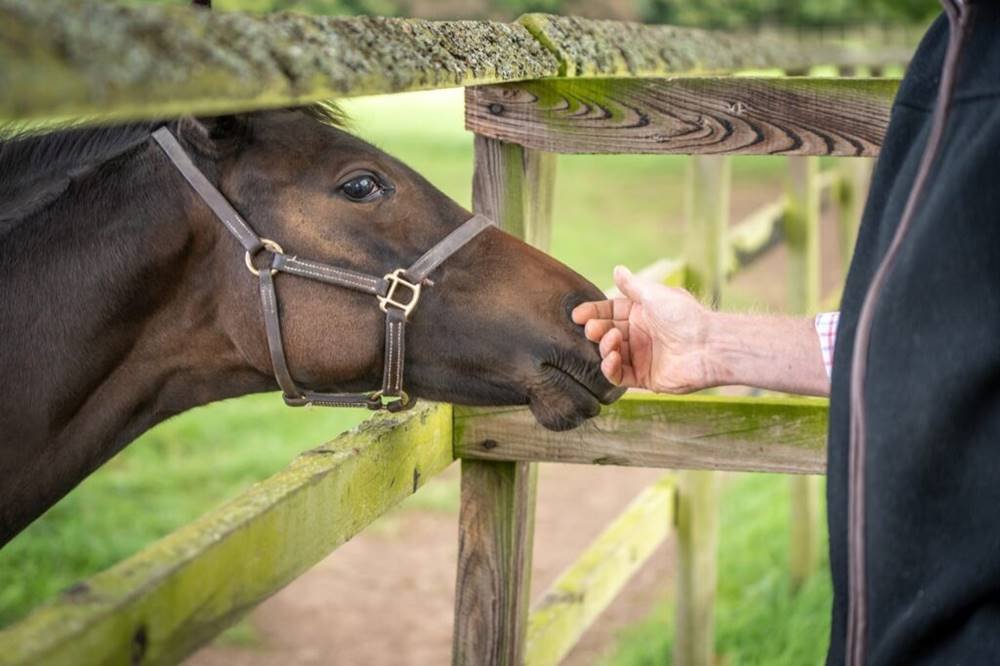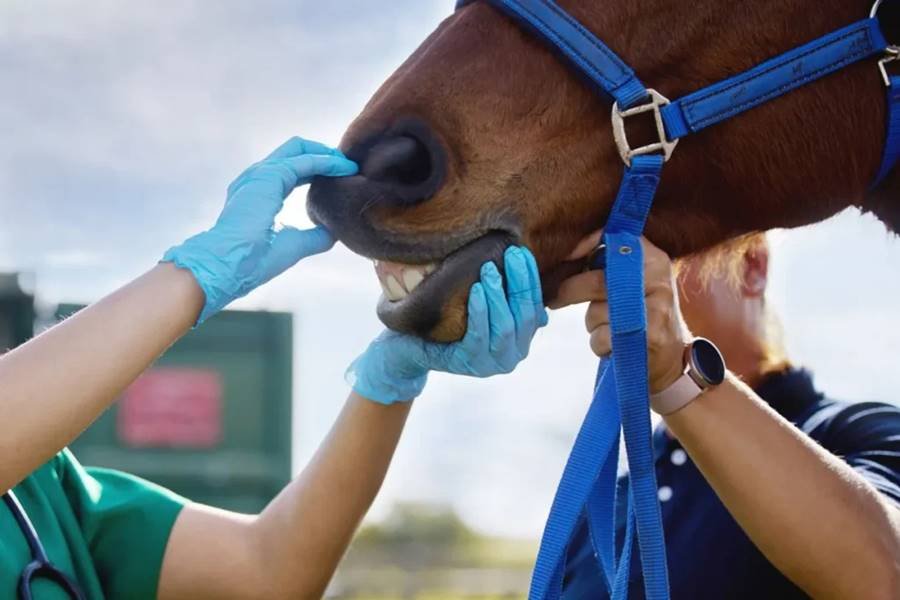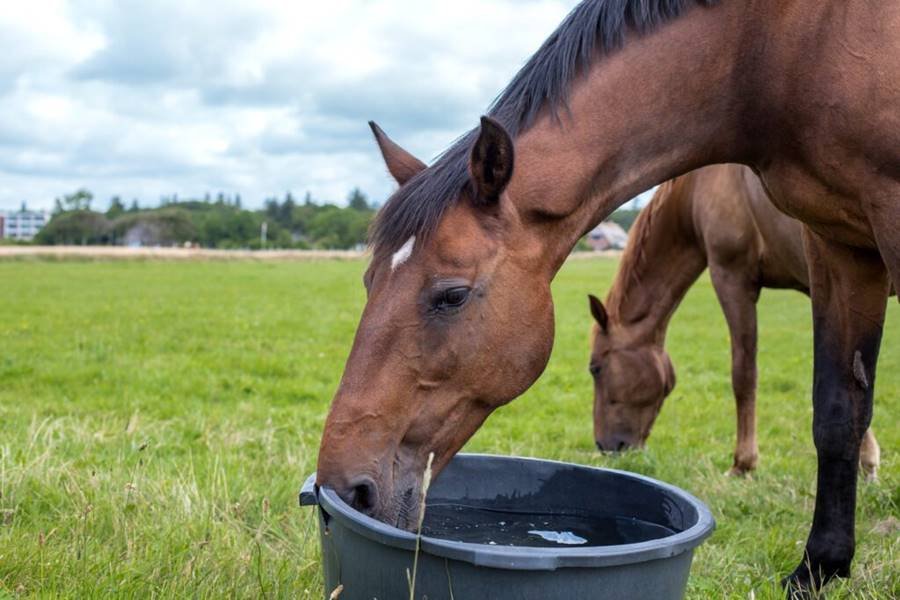Horse Tail Grooming: Tips for a Healthy, Beautiful Tail
A well-groomed tail is not only a sign of a horse’s overall health but also an important part of their daily care routine. Grooming a horse’s tail properly helps to maintain its strength, cleanliness, and appearance while also preventing tangles and discomfort. Whether you’re preparing your horse for a show or simply maintaining its coat, here’s a step-by-step guide to effective horse tail grooming.
Why Tail Grooming is Important
The tail is a vital part of your horse’s body, both for balance and communication. Keeping it in good condition helps with:
- Health: Regular grooming helps prevent tangles, sores, and infections that can result from dirt and debris trapped in the tail.
- Comfort: A clean, untangled tail reduces the risk of irritation and chafing, especially when the horse is working or exercising.
- Aesthetics: A well-groomed tail adds to the overall appearance of the horse, which is particularly important in competitive events like shows or sales.
Step-by-Step Guide to Horse Tail Grooming
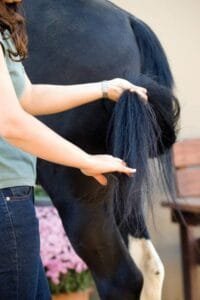
1. Prepare Your Horse
Before starting the grooming process, make sure your horse is in a safe, calm environment. Ideally, tie your horse securely in a stall or use a grooming cross-tie. If your horse is particularly sensitive about their tail, make sure they are comfortable with being touched in that area.
2. Brush the Tail

Start by brushing out any tangles or knots in the tail using a wide-toothed comb or a tail brush designed for horses. These tools are gentle and help detangle the hair without causing pain or breakage.
- Tip: If the tail is particularly knotted, use your fingers to gently separate the tangles first. Apply a little equine detangler spray if needed to ease the process.
When brushing, start at the bottom (near the tailbone) and work your way upward toward the dock (the base of the tail). This prevents pulling on the tail and reduces discomfort. Make sure to be gentle to avoid stressing out the horse.
3. Wash the Tail (When Necessary)
While regular grooming will prevent most dirt buildup, your horse’s tail may occasionally need a wash, especially after heavy training, turnout in muddy conditions, or if the tail becomes excessively dirty. Here’s how to wash the tail properly:
- Shampoo: Use a mild equine shampoo that’s designed for horse hair. Avoid using human shampoos as they may be too harsh for your horse’s coat.
- Rinse Thoroughly: Make sure to rinse the tail thoroughly to remove all shampoo residue, which can irritate the skin.
- Drying: After washing, gently towel dry the tail. If necessary, use a blow dryer on a low heat setting to dry it completely. Never pull or twist the tail when drying, as this can cause breakage.
4. Condition the Tail
After washing and drying the tail, you can apply a tail conditioner to help keep the hair soft and manageable. Equine tail conditioners or oils provide moisture and nourishment, reducing tangles and promoting healthier growth.
- Tip: Apply the conditioner to the tail’s length and work it through with your fingers or a comb. Be careful not to apply too much, as this can make the tail heavy and greasy.
5. Trim the Tail
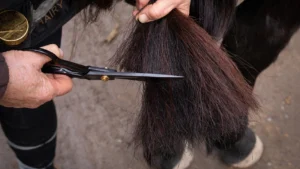
If needed, trim the tail to maintain a neat, even appearance. It’s best to trim the tail only when it’s clean and fully detangled.
- Tip: Use sharp scissors or a tail razor to trim the tail. If you’re not comfortable trimming the tail yourself, ask a professional groomer or your veterinarian to do it. Trim the tail at an even length, keeping it slightly longer than the hocks (the joint just above the hoof), especially for performance horses.
6. Maintain the Tail with Regular Grooming
Regular grooming sessions are essential to maintain a healthy tail. Aim to brush your horse’s tail at least a few times a week to prevent tangles and mats. If your horse is in heavy work or turnout, daily brushing may be necessary.
- Tip: Make sure you also brush the dock (the base of the tail) to remove dirt and debris that can cause skin irritation.
Common Tail Grooming Mistakes to Avoid
- Pulling the Tail Too Hard: Always be gentle when detangling the tail. Pulling too hard can cause pain and breakage, and may even lead to hair loss in severe cases.
- Over-Washing: Washing the tail too frequently can strip the hair of its natural oils, leading to dryness and brittleness. Aim to wash the tail only when necessary.
- Using Harsh Products: Avoid using products not specifically designed for horses. Human shampoos or hair products can damage the horse’s tail, making it dry or brittle.
- Neglecting the Tail After Exercise: After your horse has worked hard, be sure to clean and brush the tail to remove sweat and dirt that could lead to tangling or skin irritation.
Tail Care for Specific Conditions
- For Tail Rubs or Scabs: If your horse suffers from tail rubbing (due to itching or irritation), check for any underlying causes like insect bites, skin allergies, or lice. A medicated shampoo or topical treatments prescribed by your vet can help. Regularly cleaning the tail and using insect repellents can also prevent rubbing.
- For Long, Thick Tails: Long, thick tails can be difficult to manage. Consider using a tail wrap or braid to keep the tail clean and protected during muddy weather or intense physical activities.


